|
|
|
|
|
|
|
APRIL 28, 2022 | ISSUE 23
|
|
|
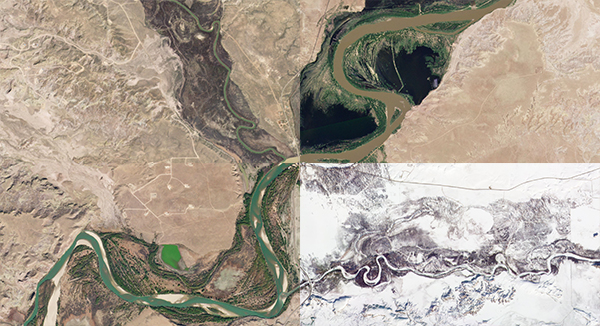 |
|
PlanetScope • Four Seasons on the Green River, Ouray, Utah • April 2019 - January 2020
|
|
In this week’s issue:
Satellites visualize our changing Earth through timelapses, we capture an image of a landslide as it happens in Canada, a powerful volcano shows signs of life
in Indonesia, and trained military dolphins are deployed in the Crimean Peninsula.
|
|
|
|
|
FEATURED STORY
Changing Earth
|
|
Songs have been written about how the times are a-changin’, but perhaps it’s time for lyrics to reflect how places are a-changin’ too.
Because, at its core, Earth’s changing nature is the only thing that’s ever remained constant since it began as a spinning ball of molten magma.
Over time its variations led to a state of being just right for hosting life.
But 4.5 billion years of changes later we find ourselves scrambling to adapt to the evolving parameters we ourselves set in motion.
|
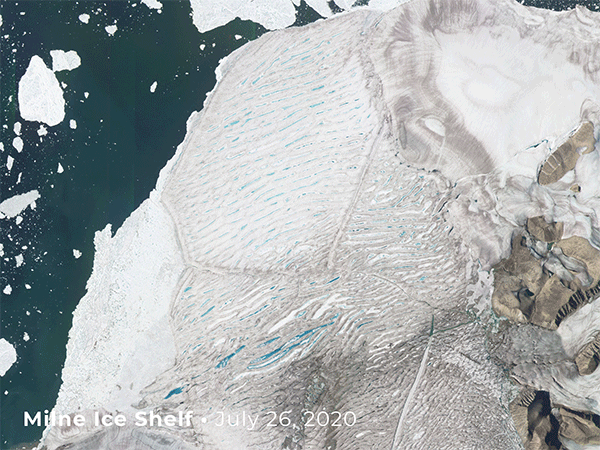 |
|
PlanetScope • Milne Ice Shelf, Canada• July 26 - 31, 2020
|
|
The planet is defined by endless movement, a complex system of repeating cycles with boundless acts of creation and destruction.
But looking around, it’s easy to forget that this sphere we call home is hurtling through space at 67,000 mph (107,000 km/h), and that even the solid
ground beneath our feet is loosely settled on tectonic plates that shift, slip, and collide.
|
 |
|
RapidEye • Salar de Uyuni, Bolivia • 2011 - 2017
|
|
It’s often hard to visualize Earth’s changes because many of them happen gradually and over long periods of time.
Humans aren’t well-equipped to perceive planetary changes at this scale.
There’s a reason why the word “glacial” also means extremely slow—it’s the natural equivalent of watching paint dry.
But timelapses help frame this motion over a timescale more digestible to us, condensing years of change into seconds.
|
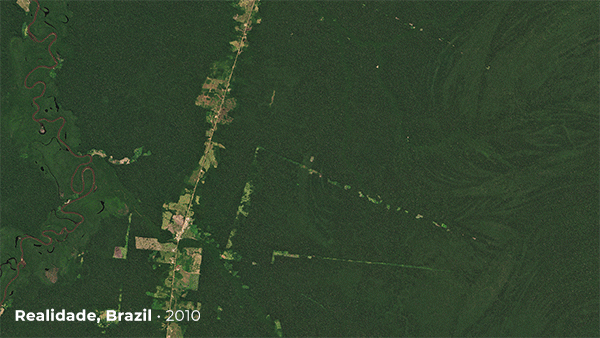 |
|
PlanetScope and RapidEye • Realidade, Brazil • 2010 - 2021
|
|
Timelapses are our bread and butter here at Planet.
When you take an image of Earth’s landmass every day for years, you’re bound to capture a lot of its changes, like sprawling cities, receding glaciers, rotating crop cycles, and seaweed farms growing along South Korea’s coast.
|
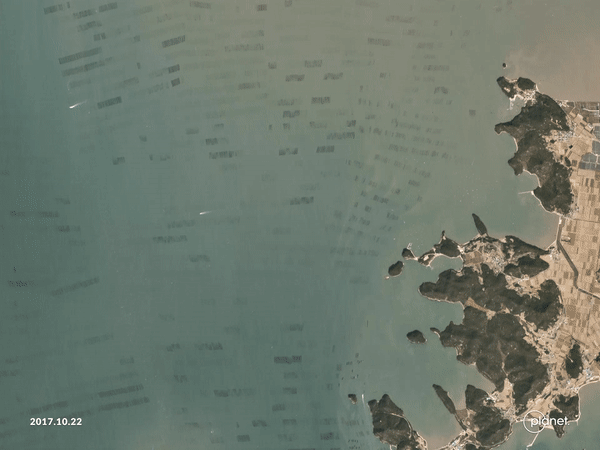 |
|
Unprocessed PlanetScope • Seaweed Farms, South Korea • August 6, 2017 - March 2, 2018
|
|
While many of Earth’s changes develop gradually at often imperceptible degrees, others are more sudden.
One of the most reliable changes we encounter every year is snowfall.
Our satellites watch as snow blankets entire regions, changing cities like Madrid from sienna to white within a day.
|
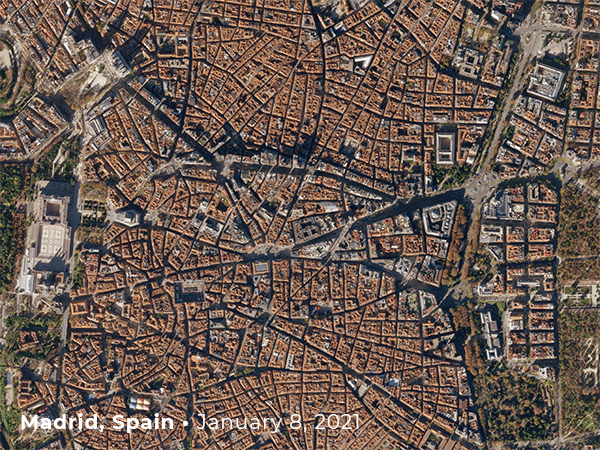 |
|
SkySat • Madrid, Spain • January 8 - 9, 2021
|
|
Planetary changes have a direction.
Some are cyclical, like tree cover changing color or reservoirs rising and falling throughout the year.
Others are more linear and permanent by nature.
Landslides, disintegrating ice shelves, and volcanic eruptions create irreversible changes.
The Hunga Tonga-Hunga Ha’apai volcano that sent shockwaves—both literal and figurative—around
the world earlier this year all but disappeared after its explosive debut.
|
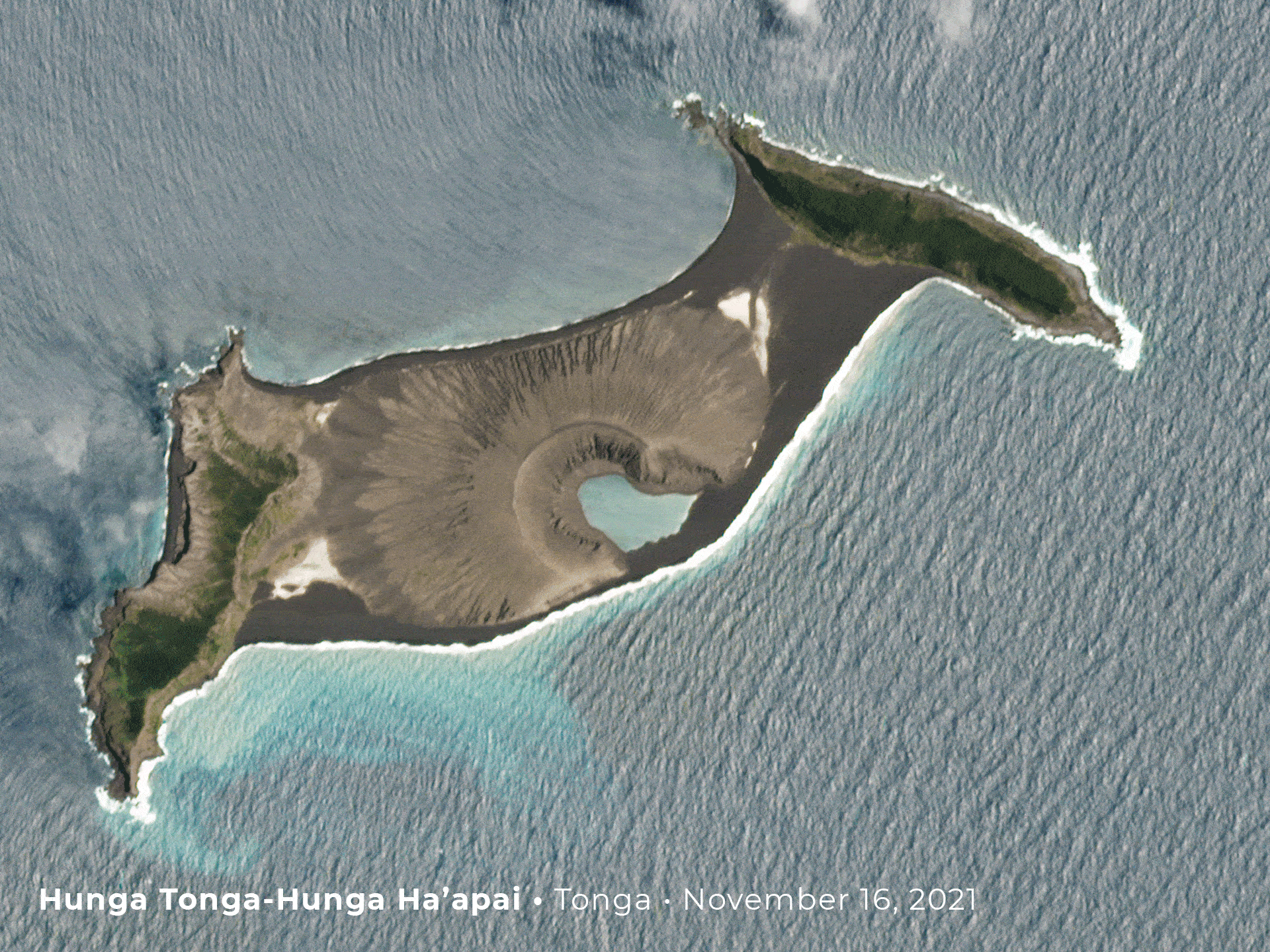 |
|
PlanetScope and SkySat • Hunga Tonga-Hunga Ha’apai, Tonga • November 16, 2021 - January 18, 2022
|
|
|
We touched on it last week, but Earth’s problem isn’t that it’s changing, it’s how we’re changing it.
Since the Industrial Revolution, the direction of that change has been nothing short of concerning.
But even as we approach tipping points that could cause irreversible damage, we
still have the power to stabilize certain aspects of the changing climate.
Places like Iran’s Lake Urmia have recovered after formerly drying.
The direction of change doesn’t necessarily have to be harmful.
|
 |
|
PlanetScope • Lake Urmia, Iran • February 18, 2019 - February 13, 2021
|
|
Imagine if you could watch a slice of Earth change over millennia: a glacier, perhaps, grinding away at the crust and carving a valley in its wake.
Satellites have begun creating the dataset that will make timelapses at such a great scale a reality in the future.
The lineage of satellite imagery that began decades ago will continue far ahead, chronicling the ever-changing nature of the planet as it moves through space and time.
|
 |
|
Landsat and PlanetScope • Columbia Glacier, Alaska • 1997 - 2021
|
|
At the center of every story is a change of some sort.
And Earth’s story is no exception.
It’s a planet of changing environmental conditions and species evolving to live on it, streaking through an ever-expanding universe.
Documenting these developments and how life adapts to them has never been more important as Earth enters a transformative new era of rapid and consequential change.
|
 |
|
PlanetScope • Tesla Gigafactory, Sparks, Nevada, USA • May 2016 - August 2017
|
|
Here at Snapshots we work to package these insights about our planet as seen from space through stories, hoping to show how the changes we see each week fit into larger narratives about our planet
and the life on it.
To help highlight how Earth’s surface is evolving in real-time, we’re launching a new “Change of the Week” section.
If you have any ideas of places around the world that would be a good fit, then let us know!
|
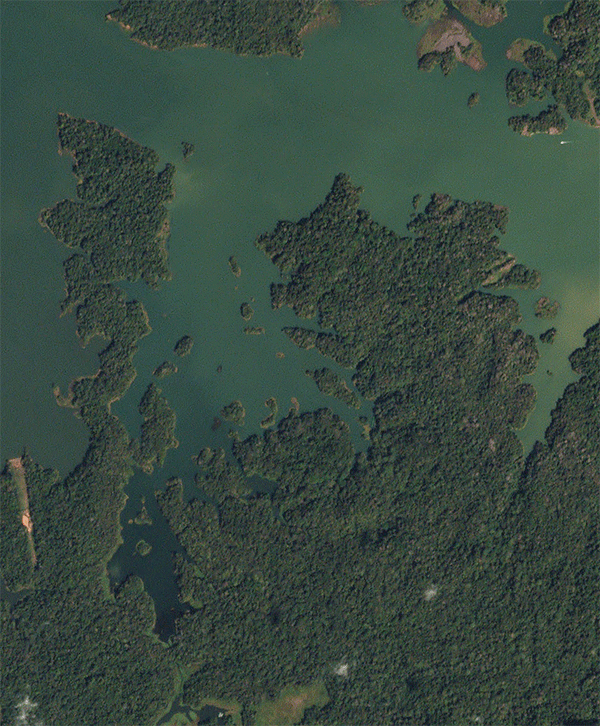 |
|
PlanetScope • Chagres River, Panama • January 2017
|
|
|
|
Seton Lake Landslide
|
|
Some of Earth’s changes are gradual, others sudden.
While we’re in the business of observing and capturing these changes, our shutters snap quickly, so it’s somewhat rare that we photograph them in progress.
Last week, one of our SkySats was lucky enough to pass over a landslide as it was happening by Seton Lake, British Columbia, Canada.
|
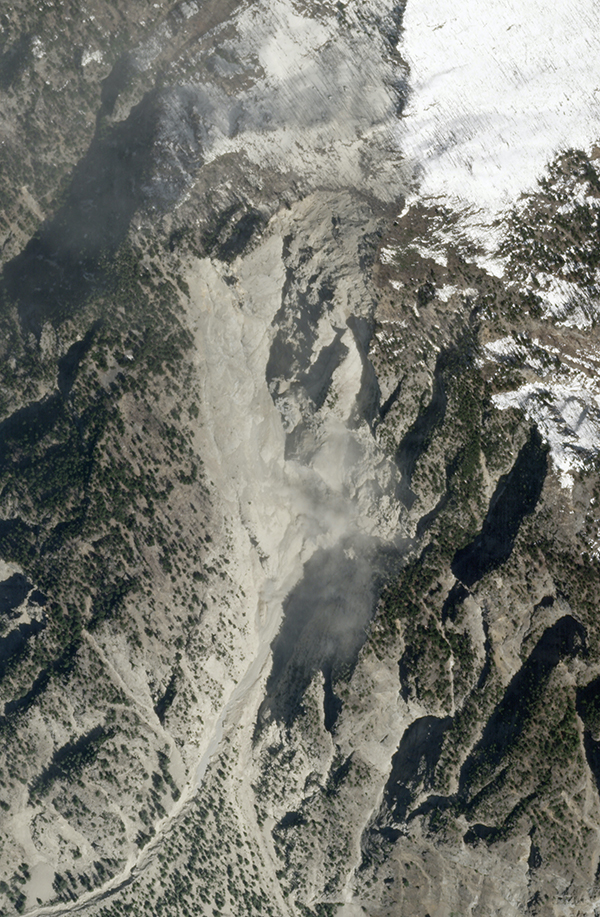 |
|
SkySat • Pyongyang, North Korea • April 17, 2022
|
|
|
Thick dust is seen dispersed in the air, obscuring details along the slope of the freshwater fjord.
Check out Dr.
Dan Shugar’s Tweet about the rockfall for more images and analysis.
|
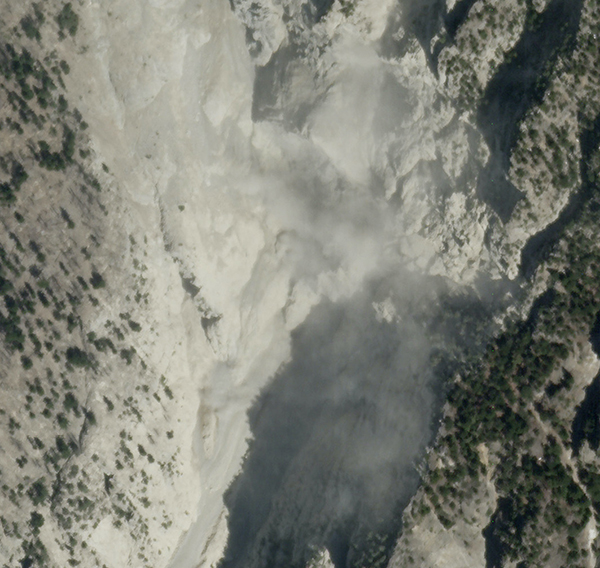 |
|
SkySat • Seton Lake, Canada • April 20, 2022
|
|
|
|
Volcanic Plume
|
|
Lands like the mythical Atlantis are lost to the sea, but others emerge from it.
The Anak Krakatau volcano broke the ocean’s surface in 1928 and has been regularly active ever since.
On Sunday, the volcano emitted a 3,000 meter (9,843 foot) plume of ash and gas,
putting Indonesian authorities on high alert.
Throughout its history Krakatau has been a volcanic hotspot, including a significant eruption in 1883 that rained ash over 800,000 square km (300,000 square miles) and
immersed the local area in darkness for nearly 3 days.
Some mythical food for thought: while researching this section we went down a volcanic rabbit hole (or main vent, in volcanic vocab) and discovered that some speculate that Atlantis was located on the Greek island of Santorini, but that it sank into the sea after a major volcanic eruption thousands of years ago.
|
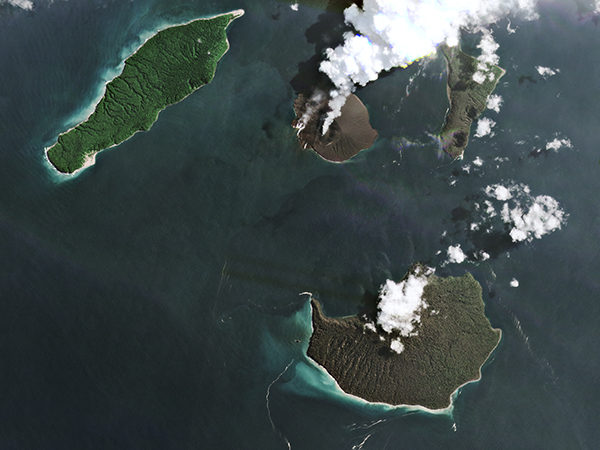 |
|
PlanetScope • Krakatau, Indonesia • April 25, 2022
|
|
|
|
Military Dolphins
|
|
The US Navy deploys SEALs, the Russian Navy releases dolphins.
USNI News used satellite imagery to spot dolphin pens (the two floating squares between the
pier and the orange object) positioned in Sevastopol Naval Base in the Crimean Peninsula, suggesting that Russia deployed the dolphins for military porpoises.
Their attuned echolocation senses and aquatic fin-esse (sorry, last one) make them highly efficient at
detecting underwater mines and defending ships from sabotage by enemy divers.
|
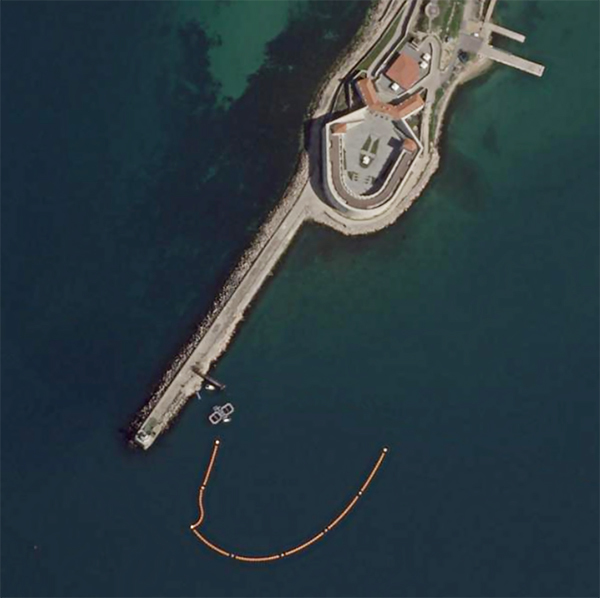 |
|
Unprocessed SkySat • Sevastopol Naval Base, Crimean Peninsula • April 27, 2022
|
|
|
|
|
|